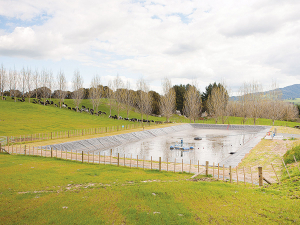2024/25 Dairy Statistics: NZ dairy farmers boost production with fewer cows
According to the New Zealand Dairy Statistics 2024/25 report, New Zealand dairy farmers are achieving more with fewer cows.
 Good effluent management is having a well-designed system and processes to apply the right amount at the right time.
Good effluent management is having a well-designed system and processes to apply the right amount at the right time.
Good effluent management on a dairy farm combines a well-designed system with proper processes to ensure the right amount of effluent gets applied to pasture at the right time.
This not only saves on fertiliser costs and enhances soil health but also helps prevent animal health problems and ensures compliance with local rules. Understanding soil water deficit is crucial to prevent run-off and applying effluent to saturated soils.
There are tools available, such as the DairyNZ Farm Dairy Effluent Spreading Calculator, to help manage the application of effluent nutrients with precision. Finally, regular maintenance of your irrigation application equipment is vital for optimal performance.
Good effluent management is a combination of having a well-designed effluent system and processes for people that make sure the effluent the system collects is applied to pasture in the right amount at the right time.
On-farm benefits of good effluent management include:
Making good effluent irrigation decisions
The key to good decision making is understanding the soil water deficit. It is essential to prevent ponding and runoff and to avoid applying effluent to saturated soils.
Soil water deficit is the amount of water (i.e. effluent) which can be applied to the soil before it reaches field capacity (which refers to the amount of water held in the soil after excess water has drained away). If effluent is added at field capacity it will likely result in ponding, runoff or leaching.
Effluent spreading
New Zealand’s dairy farm systems produce large quantities of nutrient- rich effluent which are captured from milking sheds, holding yards, feed pads, standoff pads, and animal shelters. The average dairy cow produces about $25 worth of nutrients annually as farm dairy effluent (FDE). For a 400-cow dairy herd this represents about $10,000 of nutrients annually. Using effluent to supplement fertiliser presents an opportunity to capitalise on a cost-effective nutrient resource while improving whole farm nutrient use efficiency.
Effluent is commonly grouped into three broad categories based on dry matter (DM) content: liquids (0–5%), slurries (5–15%) and solids (>15%).
Application of effluents is typically via land.
Effluent application to pasture
To get good value out of effluent and reduce environmental risk consider:
Where possible, leave a buffer strip next to waterways and farm boundaries and know your consent conditions and/or regional rules.
Article - DairyNZ
Visiting US climate change expert Dr Will Happer says the idea of reducing cow numbers to greatly reduce methane emissions is crazy.
Federated Farmers has launched a new campaign, swapping "The Twelve Days of Christmas" for "The Twelve Pests of Christmas" in an effort to highlight the most troublesome farm pests.
The Rapid Relief Team (RRT) has given farmers in the Tararua District a boost as they rebuild following recent storms.
The Government is set to announce two new acts to replace the contentious Resource Management Act (RMA) with the Prime Minister hinting that consents required by farmers could reduce by 46%.
Prime Minister Christopher Luxon says withdrawing from the Paris Agreement on climate change would be “a really dumb move”.
The University of Waikato has broken ground on its new medical school building.
OPINION: Dipping global dairy prices have already resulted in Irish farmers facing a price cut from processors.
OPINION: Are the heydays of soaring global demand for butter over?